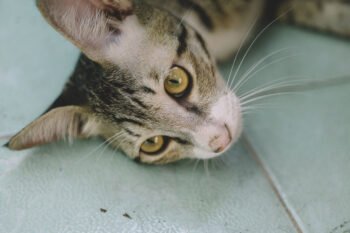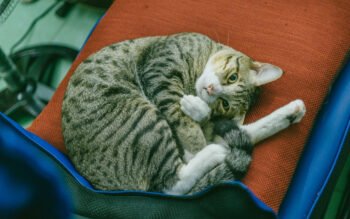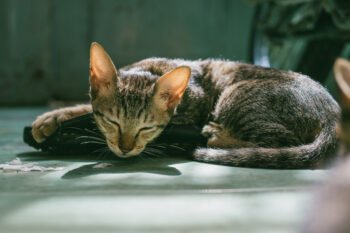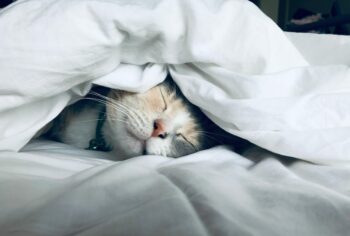Have you brushed and flossed? No, not your teeth — your cat’s
teeth. Your feline needs regular dental care just as you do. That’s
because dental disease can affect the gums, bones, and connective
tissue around your cat’s teeth. It can even cause your pet to lose one
or all of its teeth. The statistics for this are startling. According
to a recent study conducted by the American Veterinary Dental Society,
70 percent of cats develop dental problems by the age of three. To
ensure that your cat doesn’t suffer a similar fate, here’s what to do.
Beware Bad Breath
One of the first signs of dental disease
is bad breath. People often joke about how pets have a malodorous
mouth, but this usually is a symptom of underlying dental problems
initially caused by plaque buildup. Plaque is a soft, clear or
cream-colored deposit that forms on teeth. If it isn’t removed,
minerals in your cat’s saliva turn the plaque into tartar. Tartar
builds up on the tooth and below your cat’s gums allowing bacterial
growth and inflammation.
The same bacteria that lead to the inflammation can enter your pet’s
bloodstream and may cause or aggravate lung, kidney, liver, and heart
problems. That’s a lot of trouble, worry and cost from something that
may be headed off in its early stages.
Start Care Young
Begin your cat’s dental care regime as
soon as possible. If your cat is still a young kitten, inspect its
mouth as soon as it starts to get permanent teeth. Make sure that its
baby teeth come out when the new teeth come in. Retained teeth can
cause the permanent teeth to be crooked, and can promote later dental
conditions. That’s because crooked teeth can become plaque traps, which
may be difficult to clean. Kittens have tiny jaws that are at special
risk for this and related problems.
It’s also important that you condition your kitten to regular tooth
brushing. As soon as you bring your pet home, get it accustomed to
having its mouth handled. For example, gently pry its mouth open with
your hands. Afterwards, lavish it with praise and a head or cheek rub.
It is good training because it teaches the kitten to tolerate having
things in its mouth without biting or clawing. Your vet will also
appreciate that you did this when the cat becomes older.
Food and Dental Hygiene
What your kitty eats
affects its “smile.” Many experts believe that dry foods and treats
help to clean the teeth. They may do this through the abrasive nature
of the food, similar to how certain crunchy fruits and vegetables
appear to “self-clean” our teeth to some extent. Some dry foods and
treats even have special dental care properties that help slow the
formation of tartar, so take time to read product labels to see what
might be best for your cat.
Brushing at Home
When you first begin to brush your cat’s
teeth, run your finger gently over its gums. Initially, just rub the
outside gum area, but as your cat starts to adjust to the routine, open
its mouth and rub the gums inside the teeth as well.
As your pet becomes accustomed to this, wrap your finger with gauze
and rub its gums with your protected finger. Eventually, add a pet
toothpaste — never use human toothpaste. After a few weeks,
your pet should be willing to accept a toothbrush for pets. Choose a
brush that has soft, multi-tufted synthetic bristles. Keep at least one
spare on hand so that you can easily change brushes when the bristles
wear down.
Hold the toothbrush at a 45-degree angle and apply it to the area
where your cat’s teeth and gums meet. Rotate the brush in small
circles, overlapping several teeth. Finish with vertical strokes to
pull plaque from between the teeth. Repeat until all the teeth on your
feline’s cheek side are clean. The inside teeth will be more difficult,
as your pet may resist opening its mouth, but eventually you may be
able to brush the inside and outside surfaces of all the teeth. For
effective cleaning, brush your pet’s teeth a couple of times a week.
When to Call the Vet
If, after time, your pet won’t
cooperate with home brushing or if you already see brown tartar stains
on its teeth or red and bleeding gums, it’s time to turn to your
veterinarian for help. He or she will give your pet general anesthesia
and will then clean its teeth above and below the gum line to remove
plaque and tartar. After your cat’s teeth are cleaned, they will be
polished to remove microscopic plaque and to make the teeth smooth to
discourage plaque from clinging.
Just remember that dental care is as important to your pet’s health
as it is to your own. You owe it to your feline friend to provide it
with regular tooth care and cleaning. Your cat may not have nine lives,
but ensuring that it has healthy teeth and gums is one way that you can
help to make this lifetime the best that it can be.







